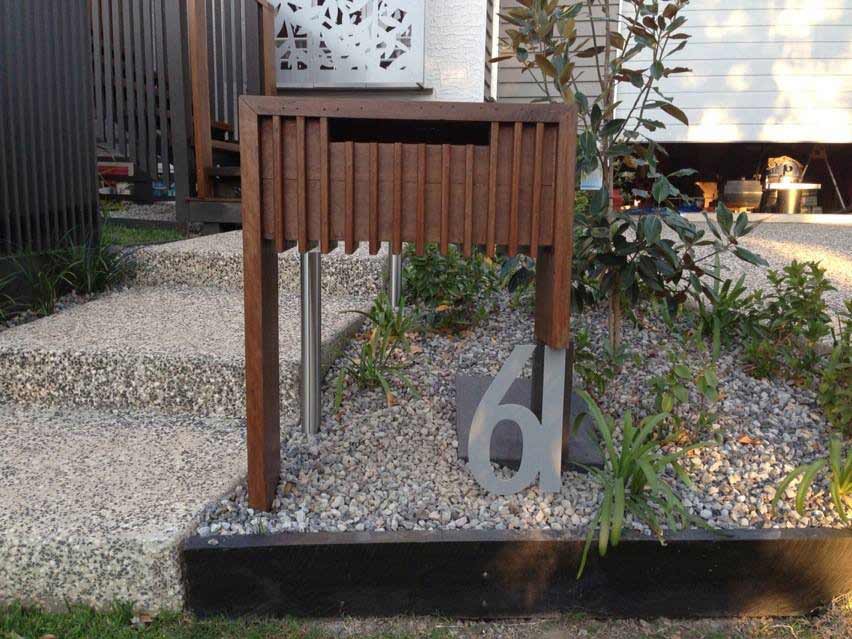
One of the best ways to learn is from the mistakes of others. So, here’s some mistakes we’ve made in our own renovation projects – and tips to improve your project!
Those of you who have been part of the UA Community for a while will know that part of my own personal journey has included renovating our own homes with my husband. It started with the first home we bought, pre-marriage, in 2002 … and so far ‘finished’ (when does a serial renovator ever finish? Believe it or not, I’m already getting the itches again!) with a massive project we completed and sold in 2013.
Honestly though … 3 houses, 12 years, a baby each renovation – something had to give.
So yes, we’ve taken a break for a while as we’ve moved to the home we actually want to live in permanently, on 77 acres in the Byron Bay Hinterland. And yes, I’ve already figured out the various ways I want to extend and renovate it, but for now, we’re enjoying having our spare time to spend together as a family and get settled in our new lifestyle and location. My focus is on building Undercover Architect, and my husband’s is on his new project and business – breeding miniature Galloway cows.
Renovating is a bit like childbirth …
We had a long car trip the other weekend, and my husband and I started reminiscing about our renovating. I think renovating is a little like childbirth. Once you have finished, and have the completed ‘product’ in your hands (or over your head), you miraculously forget the pain, stress and angst it took to get there. Right up until the very moment you are about to do it again. I recall being induced with my second bub, and after being given the medicine to start things off, told to walk the hallways. My hubby and I were pacing, and kept passing another couple who were having their first, and I said to my hubby – “I don’t know what’s worse … not knowing what lies ahead – or knowing exactly what’s in store!” Needless to say, I forgot it all again the moment my daughter was born, and right up until I had my third baby. And renovating has been similar for us.
As we started thinking about all the things that went wrong, or that we had to deal with, I remembered just how challenging and stressful some of these experiences had been. And we have done this three times!! And both have some experience – me as an architect, and my husband has always been a DIY-kind of guy (although no professional training).
So in the spirit of being your partner, giving you the warts-and-all info on renovating, with all its ups and downs – here they are … the highlights of our renovation mistakes, blunders and doozies.
Some of these were self-inflicted – through poor planning, juggling a million things and simply not thinking things through properly. Others were put upon us, through situations we had no control over, and then just had to roll with. Either way, I’m a big believer in information being empowerment, and in learning from the experience of others. So, my friends and fellow renovators, learn away!
1. Asbestos and how to shrink clothing
One of the homes we renovated had extensive asbestos both internally and externally. We knew this when we bought it, so it was part of our planning to remove the asbestos and reline these areas.
Given we live in our homes for most of the renovations (the last project was the only one we moved out of for a period whilst we raised and shifted it and got it up to a point we could move back in), we generally stage the work based on understanding how and where we’ll live in the home whilst the renovation is occurring.
With this project, we had raised the house and shifted it on the block. We had framed up the new lower floor internally and externally. We had finished the extension to a point where we had a small makeshift kitchen, and we were sleeping in a couple of rooms in the original part of the house.
We were getting airconditioning installed in the existing house, in both the lower and upper floors where all the bedrooms were located.
The airconditioning contractors were briefed to only install the ducting for the lower floor, so we could then finish lining it. They were to bring all this ducting to the point where it travelled into the upper floor (through the bedroom that my eldest two kids were sharing). Basically – cut a hole in the floor of this room, bring the ducting up, and we were going to cap it there for the moment.
There was asbestos lining on all walls and ceiling in this room. We needed it to be removed for the airconditioning ducting to be completed, but that couldn’t happen until downstairs was finished off and we could move down there. Once removed, the ducting would then be run vertically up to its unit in the ceiling, and run around the upper floor. Once we had moved downstairs and were out of the upper floor. Once asbestos had been removed safely.
So the contractor just had pull the ducting up through the hole already cut in the timber floorboards – one a little larger than the diameter of the ductwork. Bring the ductwork up and into the room, and pile it there so we could wrap and protect it until later work could occur. Simple, yes?
The ducting was coming up beside the existing clothes storage in this room, so I had pulled all the kids’ clothing out and just laid it out on their beds. So picture this … a bedroom (albeit a small one) that had 2 kids’ beds in it, kids’ clothing piled all over them, and kids’ books and toys scattered about.
I remember being on site and hearing a cracking noise … the noise of lining being cut through, shattered, dropping on the floor in big piles.
My husband and I ran upstairs. There was the contractor on a ladder, cutting open the ceiling. The asbestos ceiling. The asbestos ceiling that was falling all over the piles of clothing on my kids’ beds. Piles of clothing, bedding, toys and books that hadn’t been covered. AT ALL.
Needless to say, we both hit the roof (no pun intended).
Cut a long story short … we had the asbestos contractors (the ones we were using to remove the lining) come in and assess the situation. The type of asbestos was very low-grade, and so they advised that specialised cleaning and washing would be sufficient to remove it safely from all the kids clothes, toys and bedding. Of course, that cleaning was at very high heat, and shrank a lot of the kids’ clothes. We binned some of the items, and everything else was washed down. We back-charged the airconditioning contractor for the cost of this rectification work. They had come highly recommended, had a great reputation, and were extremely apologetic for what had happened.
The thing was, we had briefed the project manager, and he wasn’t on site at the time this work occurred. The success of effective communication is key to getting a project to run well, and to minimise mistakes, and there’d been a massive gap here. The contractor wasn’t aware of the asbestos (and strangely, hadn’t identified it). He’d also had a massive brain fart in not covering up everything in the room first before he decided to disintegrate the ceiling over all of it – even he acknowledged the stupidity in doing that – asbestos or no asbestos.
LESSON: Never assume significant facts have been communicated to those carrying out the work. I always recommend you ensure the actual person physically carrying out the work has been instructed with all relevant information by their manager or company.
2. The time we installed an indoor pool
We had put new lining and all the woodwork up (skirtings and architraves) and the plumber came to install the tapware. All was going smoothly and a good day was had by all.
My husband arrived on site the next morning, opened the door from the garage into the lower floor, and stepped into a puddle of water.
Overnight, the shower mixer in the lower floor bathroom had burst, and was leaking water over the lower floor. It had flooded most of it, as well as the materials (like piles of plasterboard sheeting) we had stored in there.
It was a manufacturing fault. The diverter had not been sufficiently tightened in the factory, and the company’s rep came out to site and organised a replacement fitting straight away.
Fortunately, we were in the midst of a spate of really good weather, and everything dried out very quickly. Chasing costs to be reimbursed from the tapware company would have been an exhausting battle, and ultimately, these are the type of things you have construction insurance for. In the end, we had to replace a couple of sheets of plasterboard, and that was about it – so we just paid for it. We walked away relatively unscathed, with a small time delay. Given how dreadful things looked for my husband when we opened the door that morning and saw the amount of water in the lower floor, things ended well.
LESSON: Stuff happens. Things can and do go wrong. Figure out what needs to be done to fix it, and keep perspective on the big picture. Figure out where it’s best to put your energy, and what battles to fight. Sometimes the immediate disaster turns out to be just a minor headache, and is simple to overcome. Keep a contingency in your budget and program to maintain your sanity, and have construction insurance for when the disasters are more significant.
3. The concrete grinder who made my stomach turn
One of our homes was a 1960s brick bungalow, and when we bought it, had apricot carpet and cork floors. Delightful, yes?

As part of our renovation to it, we ripped up the floor coverings. Half the house was timber floorboards, which we polished, and the other was a concrete slab, which we wanted to grind and polish.
After my husband determined it would take too long to do the whole job himself, we sought several quotes.
We (stupidly) chose the cheapest contractor. We were on a super-tight budget, and this drove our decision-making, and we ignored the feeling in our gut. Big mistake, but I know firsthand that sometimes you do this when money is tight and you’re trying to do as much as you can with the little money you have. You feel like there’s no choice (it’s amazing how hindsight generally teaches you otherwise!)
I was 4 months pregnant with our second child, and our eldest was almost 18 months old. We were living in one half of the house, whilst the other half was being opened up and reconfigured. Picture big plastic sheeting over windows, dust and mess and a ‘door’ in our hallway to secure where we were actually living and sleeping. A makeshift kitchen in the hallway, washing up in the bathroom, and our belongings piled in boxes around us.
This contractor was an older man who spoke a lot of his ‘old-school’ experience. He treated me with a fair amount of chauvinism. Oh – he was polite, but I was the ‘little Mrs’, not the architect driving the design, or the person paying his invoice. He deferred to my husband for all decisions and instruction. Red flag number 1.
He said he’d take three days to do the work, which was on par with the other contractors, so we didn’t think much of it. However, by the end of day one, things weren’t tracking as we expected. Red flag number 2.
He made SUCH a mess. Concrete grinding can be messy, especially when water is being used to do it. There are a few different methods – and it’s generally dusty, or sludgey. This was sludgey to the max. He didn’t seem phased when we complained. Red flag number 3.
He had bypassed the fuse system in the meter box to get his power supply not to trip the system. Given we were living in the house, we got our electrician to come check things out. He said, whilst it was not ideal, it was still ok, however with later research we found most contractors actually bring their own power supply. Red flag number 4.
He used a finish that we weren’t familiar with, but that he said he used on jobs like this all the time. We had wanted an epoxy finish to get that lovely, leveled and glossy finish you see on polished concrete floors – that’s what he’d been briefed on. This was an acrylic finish and as we investigated more with the manufacturer, we found it was for use on external driveways. The contractor was insistent it was fit for purpose. The manufacturer didn’t agree. I remember getting my laptop out and showing the contractor the material data sheets onscreen to prove him wrong, and he still was insistent (and quite insulting about my online research). Red flag number 5.
He took 3 weeks to do what was supposed to be a 3 day job.
My husband ended up using his equipment to rectify his work – the contractor hadn’t gone into corners or edges properly, so there were sludgey parts, and humps and bumps all over the place.
We got the coating system manufacturer to come out, and whilst they were super helpful, and tried desperately to help us with alternatives, they admitted they didn’t really have a product that would work the way we wanted it to. In the end we knew it would be super-durable – it just wasn’t what we’d asked for, or thought we were paying for.
I remember standing on site with this contractor, and I took the “I’m so disappointed” approach, as opposed to the “I’m so furious” approach. It seemed to get better traction with him. We outlined all the ways in which he had not satisfied the brief, had done a poor job of execution and had been generally awful to have around.
He finished the job, and with my husband’s assistance, the floor actually came up really well. We didn’t pay him in full – we’d had to pay a deposit and a partial progress payment, but he was still owed around 50% of the job and we just refused to pay it.

In hindsight, I can see ALL types of wrong with this … all the red flags that had gone up to warn me both before and during the job, that we should never had had this contractor on site.
We were on such a tight budget, and just desperate to get the work done as cheaply as possible. The thing is – making decisions from that place never goes well.
LESSON: Never choose the cheapest quote. Research the materials a contractor plans to use before you commission them. Trust your gut, listen to your instincts, and assess the way you’re being treated by a contractor before they start as a gauge of how they’ll perform in the project.
4. How not to install a shower head
My husband and I usually have lengthy discussions about how to do things on site. One of these items included the shower head, and the height at which it should be positioned. Although this time it wasn’t that lengthy.
I had the kids in the car, was about to dash somewhere, and the plumber was on site. Hubby asked me what height I wanted the shower head – which was a hand-held on a rail, with a fixed shower head as well, and I roughly gestured where I wanted it and gave some idea of heights above the finished floor level. He organised the installation.
Then the shower screen got installed. The shower overall was a 1m x 1m space, and so the shower door opening took up one side of it, at right angles to the wall the shower head was mounted on.
My husband tested the shower door, and “bang” … it hit the shower head. Remember, the shower screen is usually the last thing to go in, so the room is tiled, and finished.
We debated moving the shower head up, but that was going to involve drilling new holes in the tiles and trying to hide the old holes.
In the end, we added a glass stop to the top of the shower door so it could only open outwards. Generally you want to open a shower door inwards when its wet, so that water runs onto the shower floor and not the bathroom floor. However, given this as a 1m x 1m shower cubicle, chances are you would always be opening it outwards anyway, as there isn’t a lot of room for you and a door swing inside the shower.
No one ever noticed. No one ever said “Geeze I wish this door didn’t open this way”. The house still sold. It was one of those mistakes though that we both know we won’t make again though.
LESSON: Don’t make decisions quickly without thinking through all the areas it will impact, especially how things will function every day. Map it out in your head, imagine the activities that will happen, and coordinate them mentally, so that physically, everything works as its intended.
5. What structural engineering (and my husband) didn’t account for
My husband built the most beautiful timber mailbox at one of our homes. He had planned and thought this thing out for a while – and he’s actually very creative – so I think the designing of this had been going on whilst he was doing more mundane work.
He built it and finished it inside the garage … a cantilevering timber mailbox. I said to him at the time that I wasn’t sure timber could cantilever like that, but he was sure it would all work – he’d checked the timber sizes, and the footing had been built accordingly.
He installed it. It looked glorious. For a brief while anyway.
What he didn’t account for was our then-2-year-old swinging off the cantilevering end every time she collected the mail.
The mailbox started to sag … considerably. (My husband still says “It didn’t fail at the joints! She actually bowed the timber!”)
An architect who lived up the road from us went past one day shortly after it had started failing and asked us if we’d like some sky-hooks for our letterbox (that’s engineering speak for the magical hooks in the sky that hold up fantastical cantilevering structures!)
We were nearing completion, so I designed and had fabricated a small aluminium box section post, with our street number over it to conceal it, and my husband installed it. It only needed to prop the sagging end, and look intentional. I think we did a good job, don’t you?
LESSON: Kids and renovations are a cocktail of unexpected scale and ramifications. Keep your sense of humour, and look for the workaround. There’s generally always one there.

Anyone can renovate …
I grew up with a mum who was a bit of a serial renovator. She ‘made’ over our house several times. She’d get home from work (she worked 6 days a week managing a retail jewellery store, and later selling large-scale print/folding machines), and up a ladder, painting the house inside and out. She did a really economical makeover of the kitchen. She landscaped. She painted and painted and painted. Most work she’d do herself – she made curtains, and furniture covers. Everything was done on the tightest budget. The home always looked and felt fantastic.
She’s gone on to do similar renovations on 3 other properties since selling that home, and has built a great financial foundation that helps her enjoy her retirement.
She helped me see that anyone can do this on any budget – you just have to be prepared to do the work. That’s the kicker. Not just the work in renovating itself, but in preparing for it. Doing your research. Understanding what to do and when.
These 5 renovation mistakes, blunders and doozies, are a small window on all the things my husband and I have contended with over the years. During this car trip, we came up with 22 of them, and there are countless more from both our projects, and the projects I’ve helped my clients with over the many years I’ve been doing this type of work.
Mistakes happen, and challenges and stressful situations arise. It’s bound to happen when you tackle something as disruptive as changing the environment you live in, and add it to the already busy and full life you’re juggling.
The thing is that a lot of the mistakes I see undoing people during renovations are avoidable. Or their impact is able to be minimised.
Wouldn’t that be great if you could renovate your home and cut out all the unnecessary mess, chaos and stress that comes from the challenges and mistakes you CAN avoid – so you can focus your energies were it counts, and on the surprises that you can’t anticipate? And wouldn’t it be great if you had the tools you need to navigate those surprises with ease and certainty, minimising their effect on your budget and your time?
Understand the framework, get the know-how and tools you need, and anything is possible.
That’s what I’m here for – to be your secret weapon, guide and advisor – so you can get it right, simply and with confidence. I’d love to help you and share your journey …

 With over 30 years industry experience, Amelia Lee founded Undercover Architect in 2014 as an award-winning online resource to help and teach you how to get it right when designing, building or renovating your home. You are the key to unlocking what’s possible for your home. Undercover Architect is your secret ally
With over 30 years industry experience, Amelia Lee founded Undercover Architect in 2014 as an award-winning online resource to help and teach you how to get it right when designing, building or renovating your home. You are the key to unlocking what’s possible for your home. Undercover Architect is your secret ally
Leave a Reply